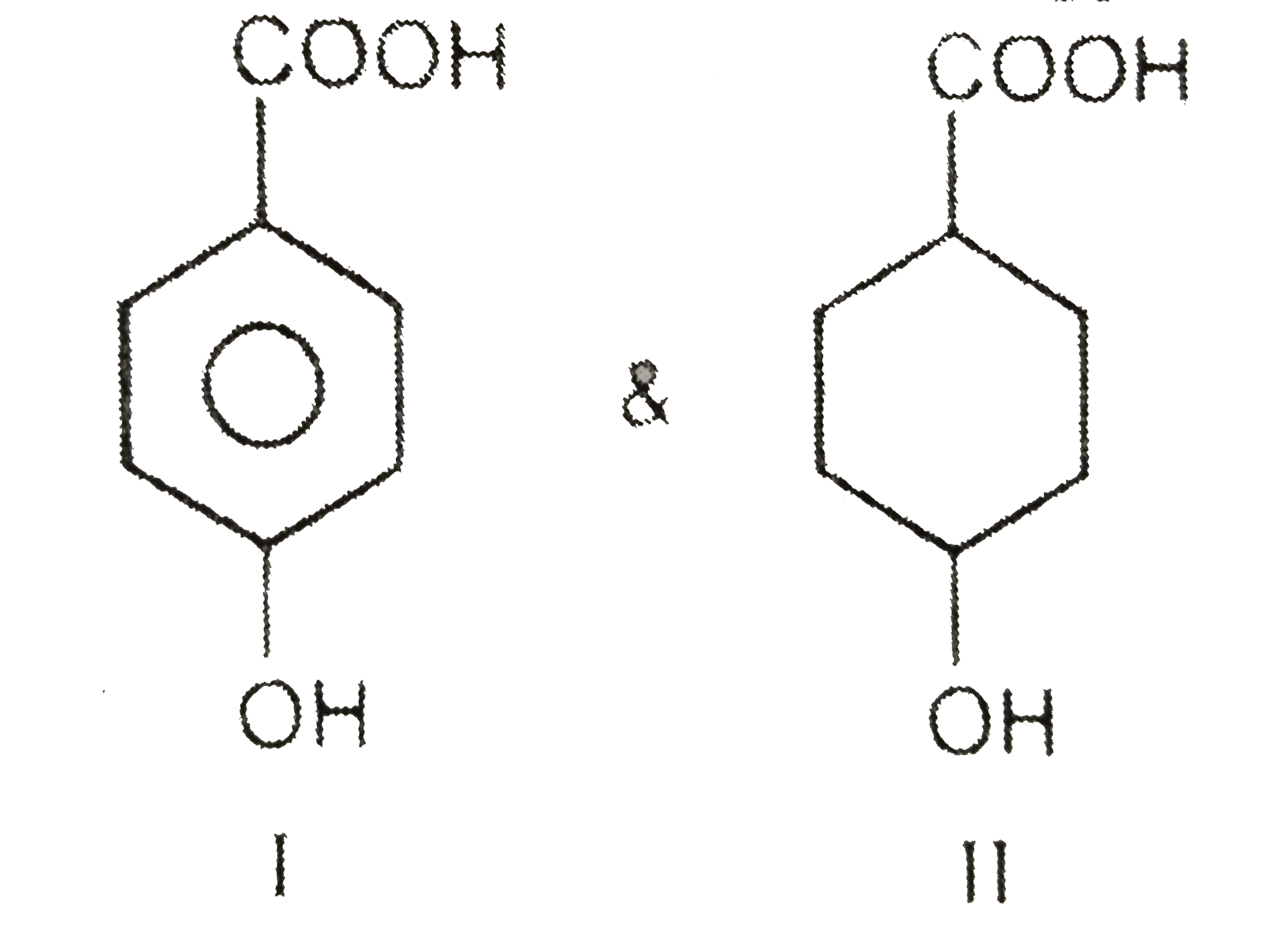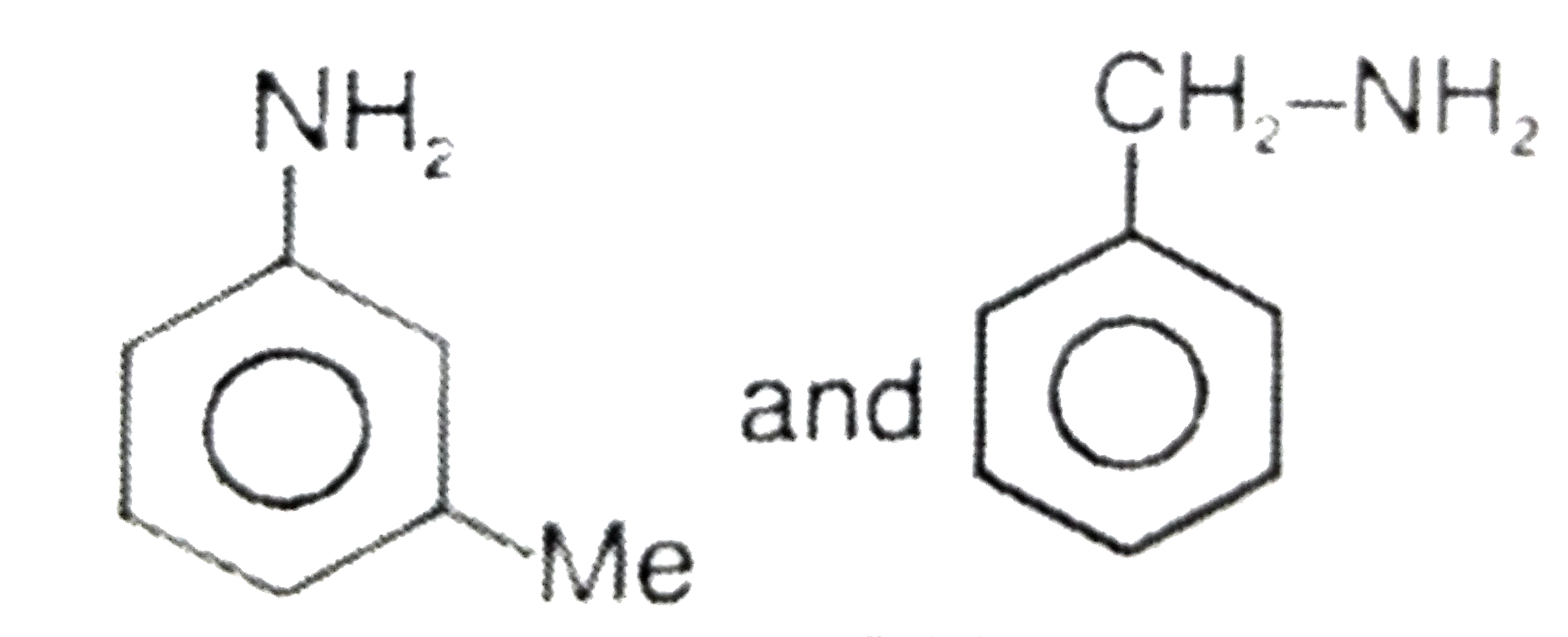Which of the following pairs can be distinguished by the action of heat?
The correct Answer is:A, B
To determine which pairs can be distinguished by the action of heat, we will analyze each pair of compounds and their reactions upon heating.
1. Analyze Sodium Carbonate and Calcium Carbonate:
- Sodium Carbonate (Na2CO3): When heated, sodium carbonate does not decompose and remains stable. Therefore, there is no observable reaction.
- Calcium Carbonate (CaCO3): Upon heating, calcium carbonate decomposes to form calcium oxide (CaO) and carbon dioxide (CO2):
CaCO3→CaO+CO2
- Distinguishing Test: The presence of carbon dioxide can be confirmed by passing it through lime water (calcium hydroxide solution), which turns milky due to the formation of calcium carbonate. Thus, sodium carbonate and calcium carbonate can be distinguished by heat.
2. Analyze Potassium Carbonate and Magnesium Carbonate:
- Potassium Carbonate (K2CO3): Similar to sodium carbonate, potassium carbonate is stable upon heating and does not decompose.
- Magnesium Carbonate (MgCO3): When heated, magnesium carbonate decomposes to form magnesium oxide (MgO) and carbon dioxide (CO2):
MgCO3→MgO+CO2
- Distinguishing Test: As with calcium carbonate, the carbon dioxide produced can be tested using lime water. Therefore, potassium carbonate and magnesium carbonate can also be distinguished by heat.
3. Analyze Calcium Nitrate and Sodium Nitrate:
- Calcium Nitrate (Ca(NO3)2): When heated, calcium nitrate decomposes to form calcium oxide (CaO), nitrogen dioxide (NO2), and oxygen (O2):
Ca(NO3)2→CaO+2NO2+O2
- Sodium Nitrate (NaNO3): Upon heating, sodium nitrate decomposes to form sodium nitrite (NaNO2) and oxygen (O2):
NaNO3→NaNO2+O2
- Distinguishing Test: The nitrogen dioxide gas released from calcium nitrate is brown in color, while sodium nitrate does not produce a colored gas. Thus, these two nitrates can be distinguished by heating.
4. Analyze Magnesium Chloride Hexahydrate and Calcium Chloride Hexahydrate:
- Magnesium Chloride Hexahydrate (MgCl2·6H2O): Upon heating, it undergoes hydrolysis to form magnesium hydroxide chloride (MgOHCl), hydrochloric acid (HCl), and water:
MgCl2⋅6H2O→MgOHCl+HCl+5H2O
- Calcium Chloride Hexahydrate (CaCl2·6H2O): This compound does not undergo hydrolysis upon heating and simply loses water to form anhydrous calcium chloride (CaCl2):
CaCl2⋅6H2O→CaCl2+6H2O
- Distinguishing Test: The hydrochloric acid produced from magnesium chloride can be tested by passing it through ammonia solution, forming a white precipitate of ammonium chloride (NH4Cl). Thus, magnesium chloride hexahydrate and calcium chloride hexahydrate can also be distinguished by heating.
Conclusion:
All pairs (A, B, C, D) can be distinguished by the action of heat.
- Sodium Carbonate (Na2CO3): When heated, sodium carbonate does not decompose and remains stable. Therefore, there is no observable reaction.
- Calcium Carbonate (CaCO3): Upon heating, calcium carbonate decomposes to form calcium oxide (CaO) and carbon dioxide (CO2):
CaCO3→CaO+CO2
- Distinguishing Test: The presence of carbon dioxide can be confirmed by passing it through lime water (calcium hydroxide solution), which turns milky due to the formation of calcium carbonate. Thus, sodium carbonate and calcium carbonate can be distinguished by heat.
- Potassium Carbonate (K2CO3): Similar to sodium carbonate, potassium carbonate is stable upon heating and does not decompose.
- Magnesium Carbonate (MgCO3): When heated, magnesium carbonate decomposes to form magnesium oxide (MgO) and carbon dioxide (CO2):
MgCO3→MgO+CO2
- Distinguishing Test: As with calcium carbonate, the carbon dioxide produced can be tested using lime water. Therefore, potassium carbonate and magnesium carbonate can also be distinguished by heat.
- Calcium Nitrate (Ca(NO3)2): When heated, calcium nitrate decomposes to form calcium oxide (CaO), nitrogen dioxide (NO2), and oxygen (O2):
Ca(NO3)2→CaO+2NO2+O2
- Sodium Nitrate (NaNO3): Upon heating, sodium nitrate decomposes to form sodium nitrite (NaNO2) and oxygen (O2):
NaNO3→NaNO2+O2
- Distinguishing Test: The nitrogen dioxide gas released from calcium nitrate is brown in color, while sodium nitrate does not produce a colored gas. Thus, these two nitrates can be distinguished by heating.
- Magnesium Chloride Hexahydrate (MgCl2·6H2O): Upon heating, it undergoes hydrolysis to form magnesium hydroxide chloride (MgOHCl), hydrochloric acid (HCl), and water:
MgCl2⋅6H2O→MgOHCl+HCl+5H2O
- Calcium Chloride Hexahydrate (CaCl2·6H2O): This compound does not undergo hydrolysis upon heating and simply loses water to form anhydrous calcium chloride (CaCl2):
CaCl2⋅6H2O→CaCl2+6H2O
- Distinguishing Test: The hydrochloric acid produced from magnesium chloride can be tested by passing it through ammonia solution, forming a white precipitate of ammonium chloride (NH4Cl). Thus, magnesium chloride hexahydrate and calcium chloride hexahydrate can also be distinguished by heating.
All pairs (A, B, C, D) can be distinguished by the action of heat.
Topper's Solved these Questions
- S-BLOCK GROUP 2 - ALKALINE EARTH METALSBOOK - CENGAGE CHEMISTRY ENGLISHCHAPTER - S-BLOCK GROUP 2 - ALKALINE EARTH METALSEXERCISE - Exercises Single Correct
82 Videos
- S-BLOCK GROUP 2 - ALKALINE EARTH METALSBOOK - CENGAGE CHEMISTRY ENGLISHCHAPTER - S-BLOCK GROUP 2 - ALKALINE EARTH METALSEXERCISE - Exercises Assertion Reasoning
17 Videos
- S-BLOCK GROUP 2 - ALKALINE EARTH METALSBOOK - CENGAGE CHEMISTRY ENGLISHCHAPTER - S-BLOCK GROUP 2 - ALKALINE EARTH METALSEXERCISE - Exercises Linked Comprehension
42 Videos
- S-BLOCK GROUP 1 - ALKALI METALSBOOK - CENGAGE CHEMISTRY ENGLISHCHAPTER - S-BLOCK GROUP 1 - ALKALI METALSEXERCISE - Archives Subjective
8 Videos
- SOME BASIC CONCEPTS AND MOLE CONCEPTBOOK - CENGAGE CHEMISTRY ENGLISHCHAPTER - SOME BASIC CONCEPTS AND MOLE CONCEPTEXERCISE - Archives Subjective
11 Videos
Similar Questions
Knowledge Check
Which of the following pairs can be distinguished by using Lucas reagent?
A B
B C
C D
D
Which of the following reagents can be distinguish propyne from propene?
ABr2,CCl4BDilute KMnO4CConc. H2SO4DAgNO3 in NH4OHWhich of the following pairs can be differentiated by Tollen's reagent?
A B
B C
C D
D
Which of the following pair can't exist in solution
View SolutionWhich of the following pair of acid radicals can be distinguished by using dil H2SO4?
View SolutionWhich of the following paires can be septated by H2S in dil HCI?
View SolutionWhich of the following reagents can be used to distinguish between a sulphite and a sulphate in solution?
View SolutionWhich of the following reagent can distinguish the given compound I and II ?

View Solution

 can be distinguish by
can be distinguish by